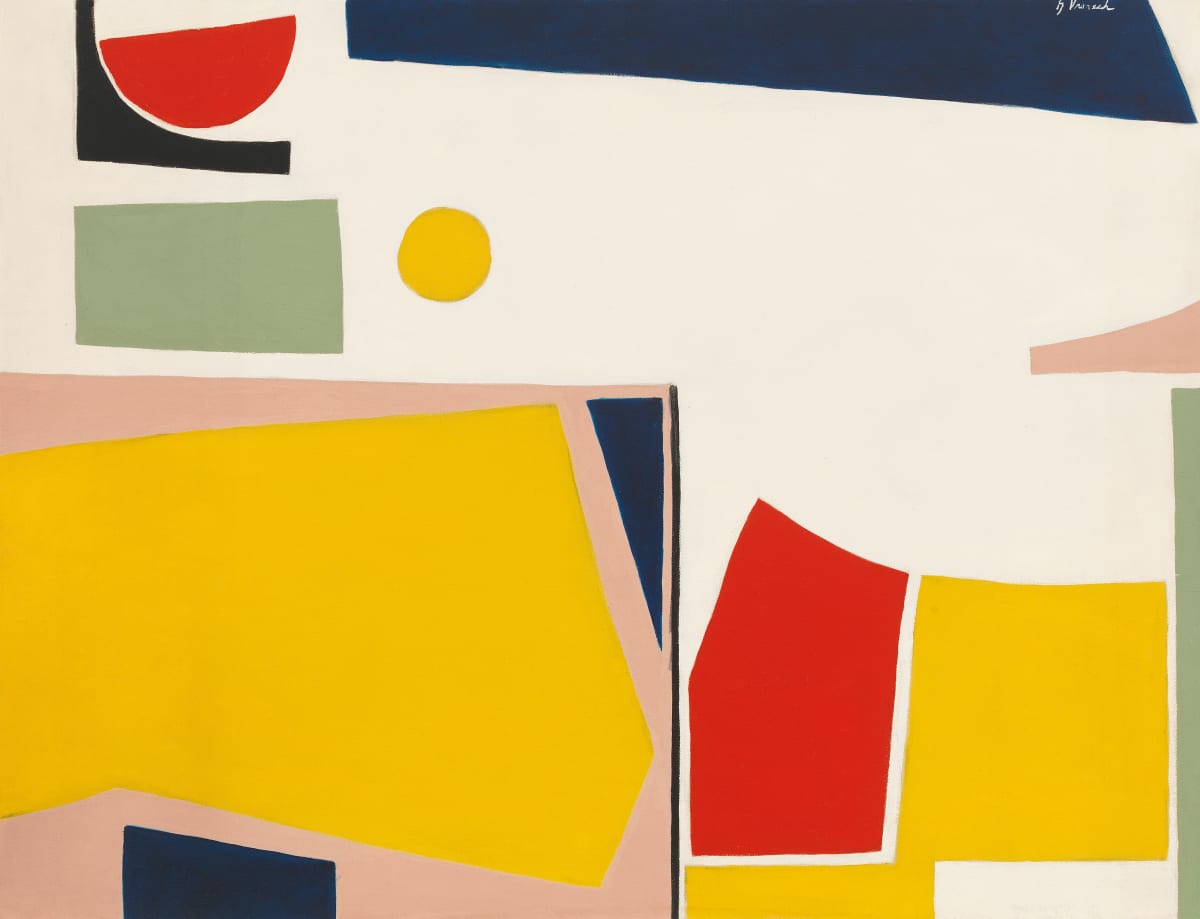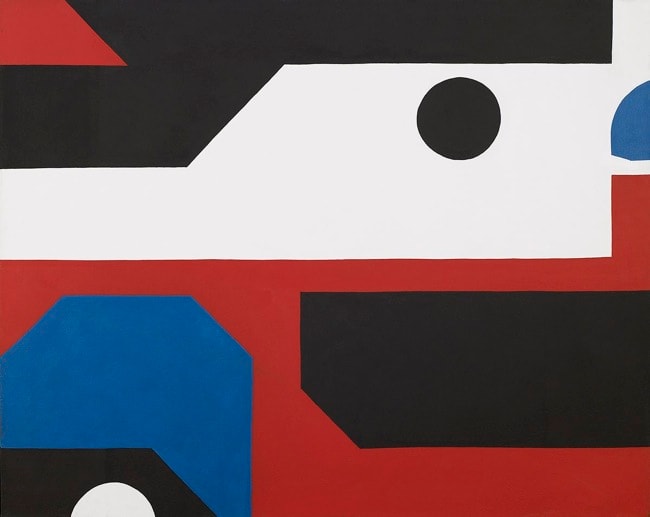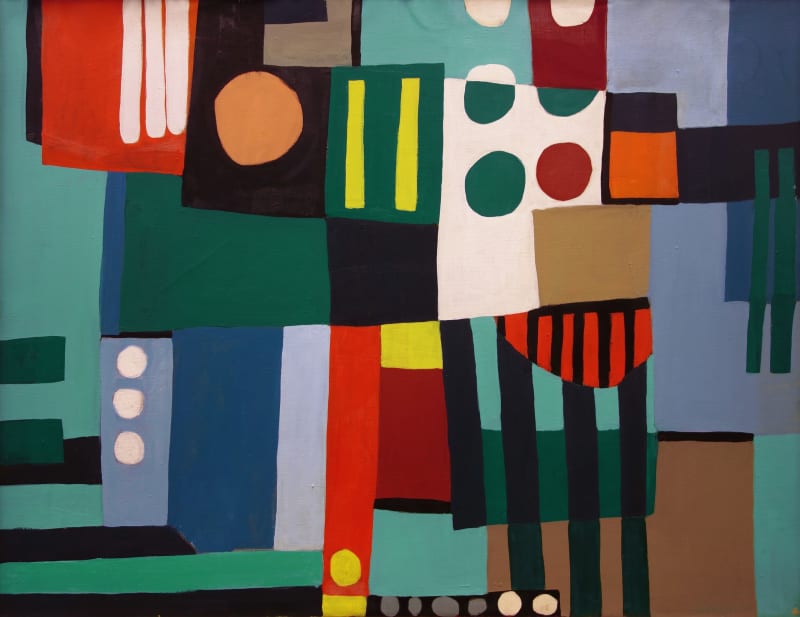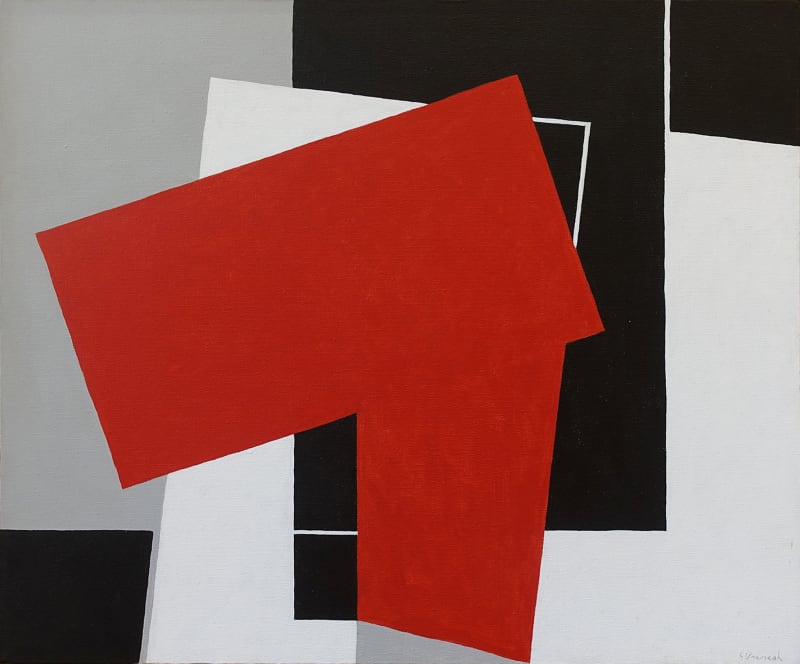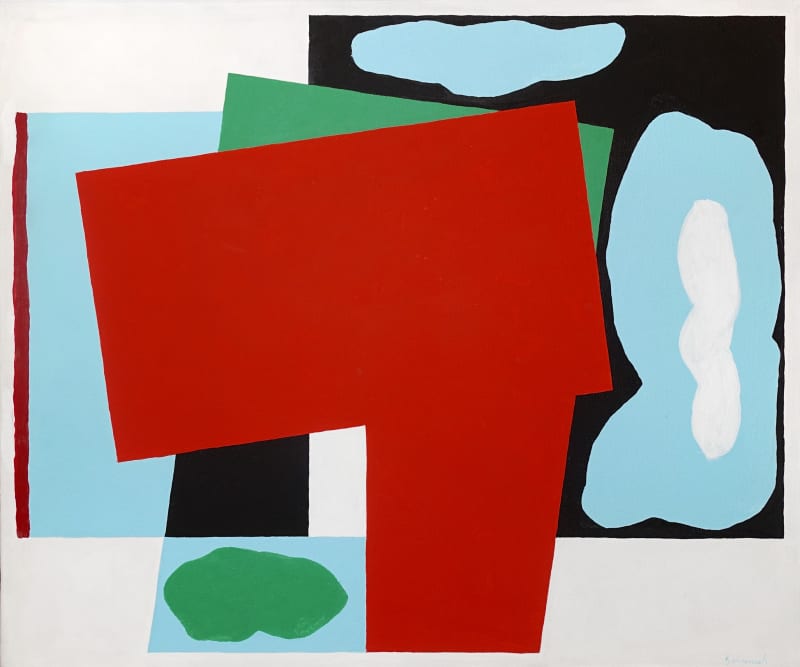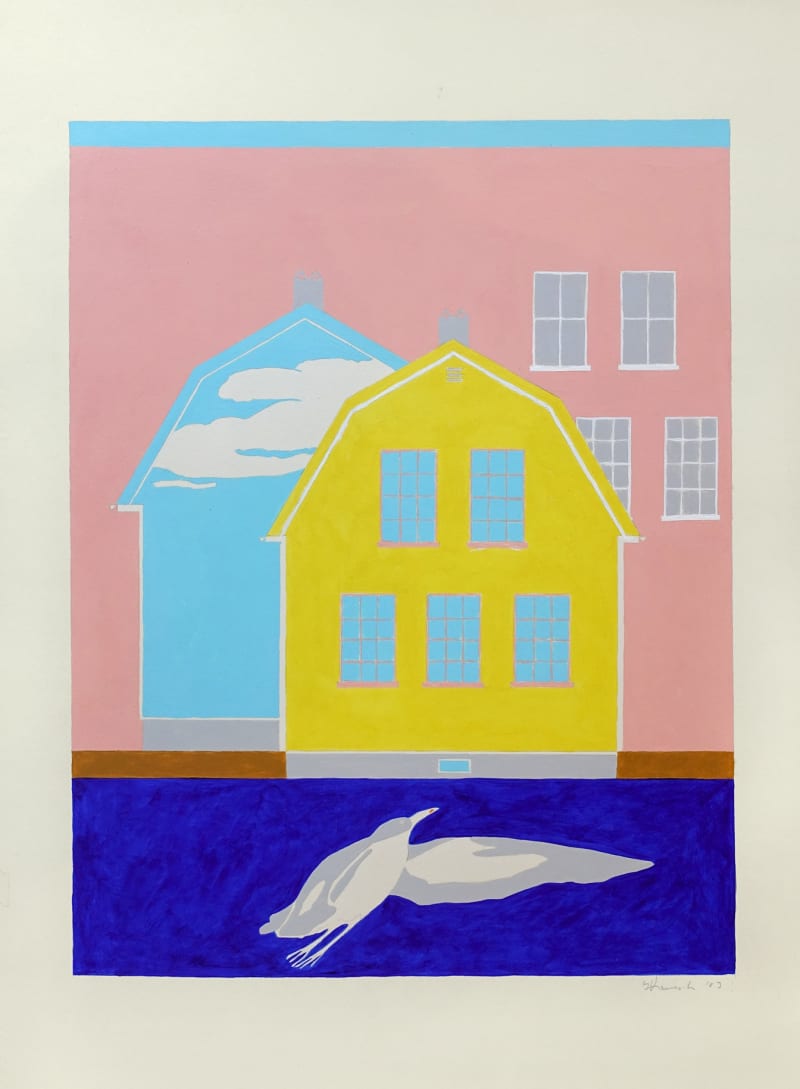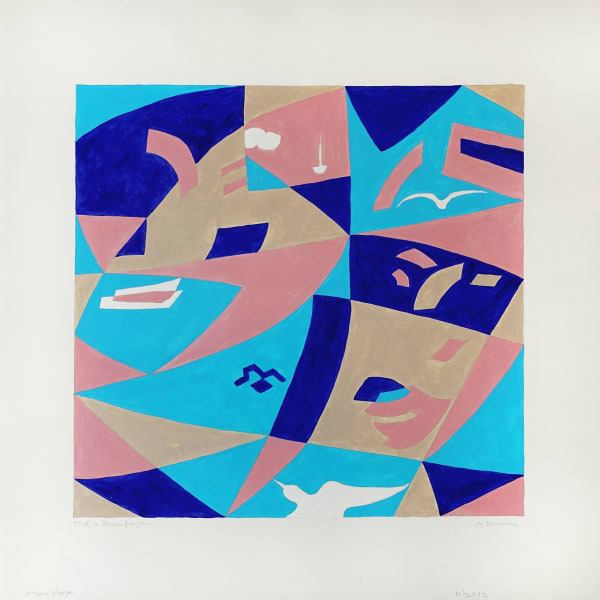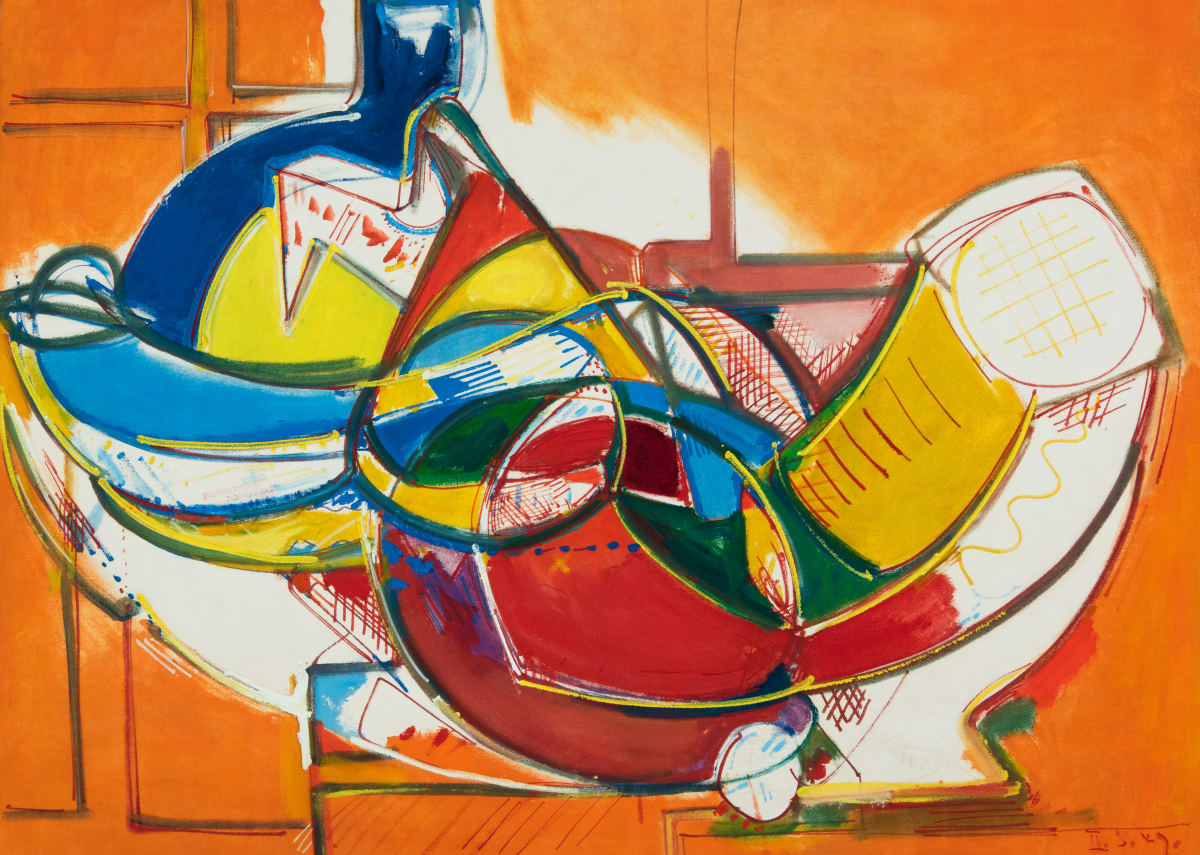
A superb colorist and ever-evolving modernist, throughout his career Vranesh pursued eclectic sources and subjects.
A student of Will Barnet, George Vranesh was born in Hibbing, Minnesota in 1926 and served with the U.S.Navy from 1944-1946 before beginning to study art at the Art Students League in New York in the mid-fifties. Vranesh's study under Barnet at the League was central to his artistic development. The relaxed structure of the program allowed for supportive exchanges of ideas between students as well as an exposure to the principals of modernism.
A student of Will Barnet, George Vranesh was born in Hibbing, Minnesota in 1926 and served with the U.S.Navy from 1944-1946 before beginning to study art at the Art Students League in New York in the mid-fifties. Vranesh's study under Barnet at the League was central to his artistic development. The relaxed structure of the program allowed for supportive exchanges of ideas between students as well as an exposure to the principals of modernism.
Barnet encouraged study in the history of art as well as formal experimentation. Vranesh recalled: "We looked at a variety of sources for information about past and present traditions in art. For me, a very close reading of Ozenfant's Foundation of Modern Art...We looked for ways to communicate thoughts and concepts among ourselves, about the paintings themselves, the ideas of relationships between shapes and colors, such as the 'push-pull' of shapes and colors..." (1) In Vranesh's painting the influences of the purist theories of Ozenfant, combine with the "push-pull" color theories of Hans Hofmann, which the artist alludes to in his statement. These two systems are in some respects complementary. Ozenfants theories, with their emphasis on a rational ordering and analyzing of objects provide a means of abstracting and arranging shapes.Hofmann's theories, in turn, suggest a method understanding and organizing colors, while still allowing for their expressive and poetic potentials. Vranesh's bright, primary color compositions of the fifties have affinities with Hofmann's works, particularly those begun in 1957, when Hofmann began applying brilliant colors in painterly rectangular blocks.
Through Barnet, and also perhaps through Hofmann or his students, Vranesh became aware of the achievements of the group of Indian Space Painters. The Indian Space Painters was initially formed in the 1940s by Steve Wheeler, Peter Busa and Robert Barrell, three students of Hofmann. Barnet joined the group later in the late forties. As Joseph Jabob has written in his recent article Indian Space Painters:
"These artists were especially attracted to American Indian culture. They were regular visitors to the ethnographic dioramas at the Museum of Natural History, the Brooklyn Museum and the Museum of the American Indian...In particular they were drawn to the objects of the Northwest Coast Indians, admiring the way Indian artists reduced nature to flat linear symbols and created images in which it was nearly impossible to distinguish positive from negative space. (2)"
The Indian Space Painters looked to Native American art as means to explore abstraction and, Busa especially, incorporated surrealist elements into his style. He met frequently with Matta, Pollock, Baziotes and Motherwell to create Surrealist drawings, and may have been a conduit who stimulated Pollock's early interest in Native American painting. Despite their importance, the group only exhibited on time, in 1946 at Gallery Neuf. Although they were an important source for the development of Abstract Expressionism, after the success of the abstract expressionist painters, they fell out of prominence. (3) By the time Vranesh arrived in New York in the mid fifties, they had largely disbanded. He most likely became aware of their techniques through Barnet or other former members.
Vranesh's interest in anthropology (he completed an MA degree at the University of Iowa before coming to New York) may also have encouraged his interest in the art of different cultures. In his use of interlocking, organic forms, which erode the distinction between positive and negative space, his paintings do exhibit certain affinities with Wheeler's. As was sometimes the case with Wheeler's paintings, Vranesh's titles do not overtly suggest an engagement with Native American art or mythology. His titles of the fifties such as Interior, City Streets, and Woman at the Desk, express the familiar subjects of modern life pursued by twentieth century masters such as Matisse and Picasso. In this respect his engagement with Indian Space Painting may have been closer to Barnet's. Like so many modernists who drew upon what they considered "primitive" Native American society as a means to picture the modern condition, Barnet "saw a parallel between what he called 'the dynamism of Indian society' and the fast-paced tempo of the modern world." (4) This at times stereotypical view, the product of its historical moment, was nevertheless instrumental in the development of American modernism, particularly in the inter-war and immediate postwar period.
A superb colorist and ever-evolving modernist,throughout his career Vranesh pursued eclectic sources and subjects. Every summer from 1959 to 1965 he traveled to Alaska where he created drawings and sketches that served as the subjects for his subsequent exhibition of paintings called Alaskan Horizons. He also developed his talents as a printmaker and a teacher. Vranesh first exhibited with the group 10/4 in New York and later showed his work in Anchorage, New York, and Newport Rhode Island.
(1) George Vranesh, "Artist Statement: Early Works and Study" (Montanaro Gallery, Newport RI, 2007)
(2) Joseph Jacobs, "Indian Space Painters," Art and Antiques vol. 30 no.2 (Fall, 2007): 58-65.
(3) Ibid
(4) Ibid








